

导读
大气中二氧化碳浓度(ca)的升高改变了热带树木的生理机能,也可能改变了它们的生长,但这些影响可能会受到气候的影响。这种ca和气候的相互作用对全球植物营养模型预测的热带森林CO2施肥效应有重要的推动作用,但还没有经过实证检验。本研究采用树木年轮分析来量化ca上升使树干生长对年降雨量和温度波动敏感性发生的变化。
▉ 原文信息
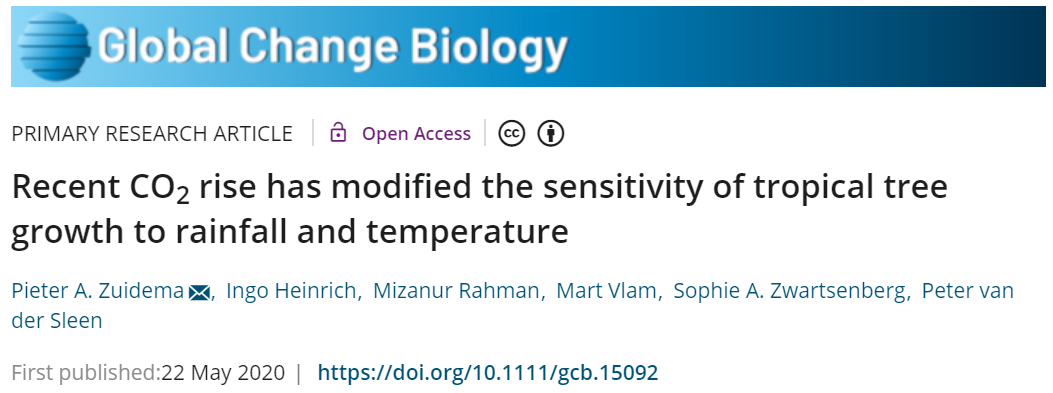
▉ 正文
我们假设,ca上升能通过减少蒸腾作用和增加叶片温度来降低生长对干旱的敏感性和增加的温度敏感性。这些响应预期会出现在温度较低的地区。而在较温暖的地方,ca上升可能导致叶片温度经常超过光合作用的最佳温度,进而导致叶片对干旱敏感性的增加和温度的负作用增强。我们以广泛的分布在(亚)热带的树种红椿(Toona ciliata)为研究对象,通过测定129棵树,合计5318个树轮来验证这些假设。
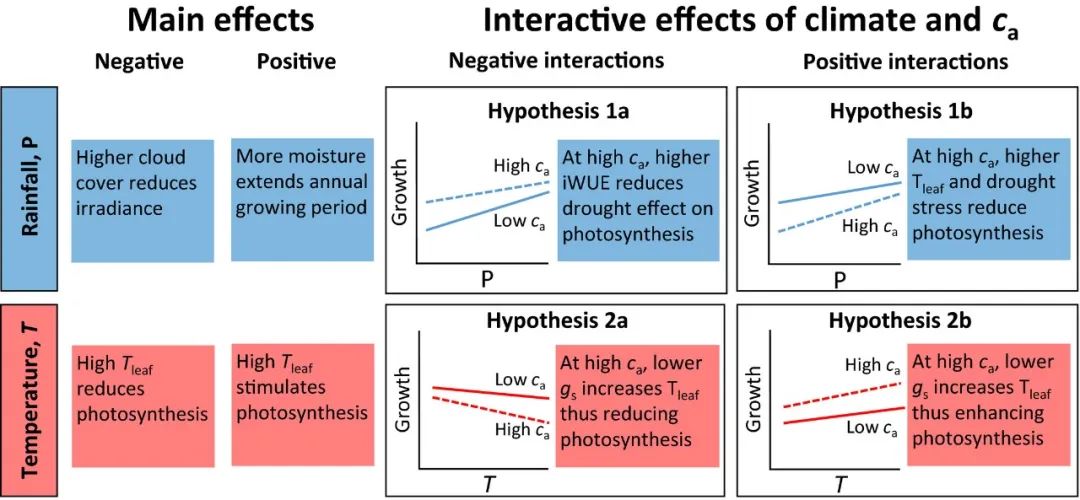
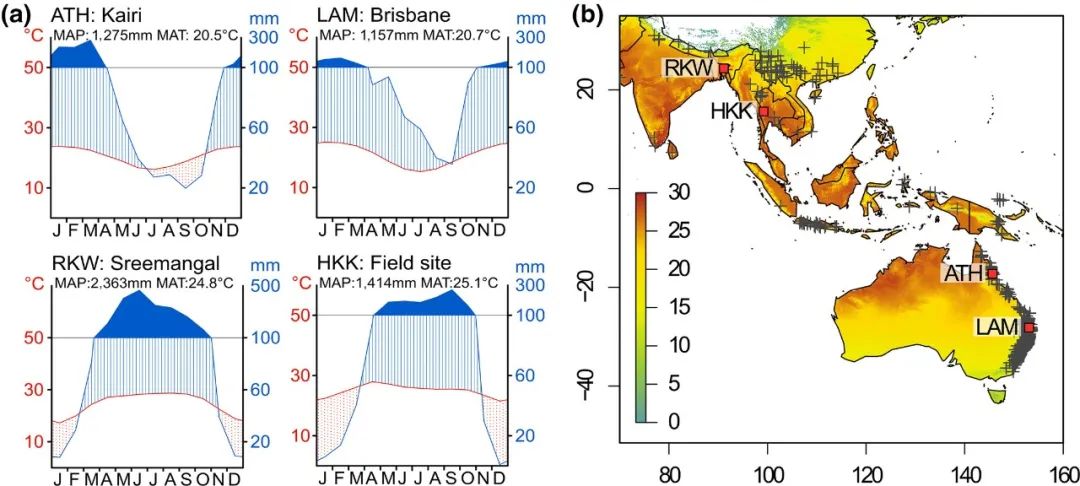
Figure 2 Climatic characteristics and location of our study sites. (a) Climate diagrams for the study sites, from nearby climate stations (ATH, LAM and RKW) or based on gridded data (HKK). (b) Locations of the four study sites on a map showing mean annual temperature (°C) based on WorldClim 2.0 gridded data (Fick & Hijmans, 2017). Crosses indicate locations where Toona ciliata herbarium specimens were collected as an indication of the natural geographic range (GBIF.org, 2019)
我们研究了1950年至2014年期间树木的增长响应,这一时期ca增长了28%。年轮数据来自两个较冷的(年平均温度: 20.5–20.7°C)和两个较热的(23.5–24.8°C)站点。我们使用年轮宽度测量的混合效应模型测试了ca和气候的相互作用。我们的统计模型揭示了几个显著而稳健的ca和气候的相互作用。在较冷的地点(和季节),ca和气候的相互作用与干旱敏感性降低和温度敏感性增加的假设生长响应表现出良好的一致性。在较温暖的地区,干旱敏感性随ca的增加而增加,正如预测的那样,炎热的年份在高ca时引起更强烈的生长减弱。
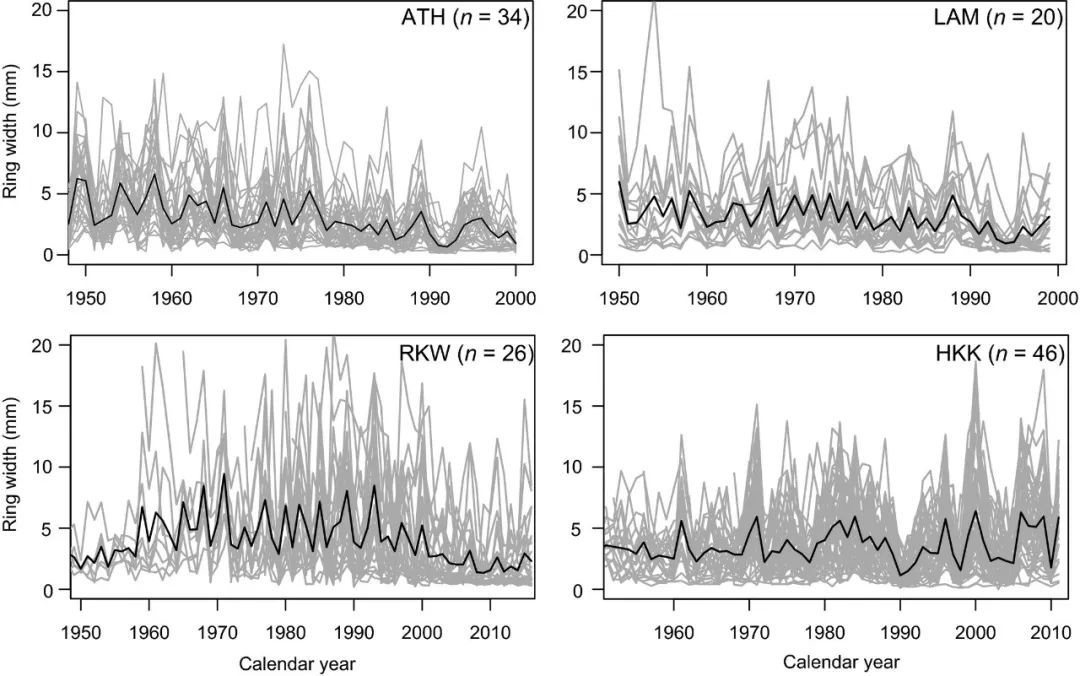
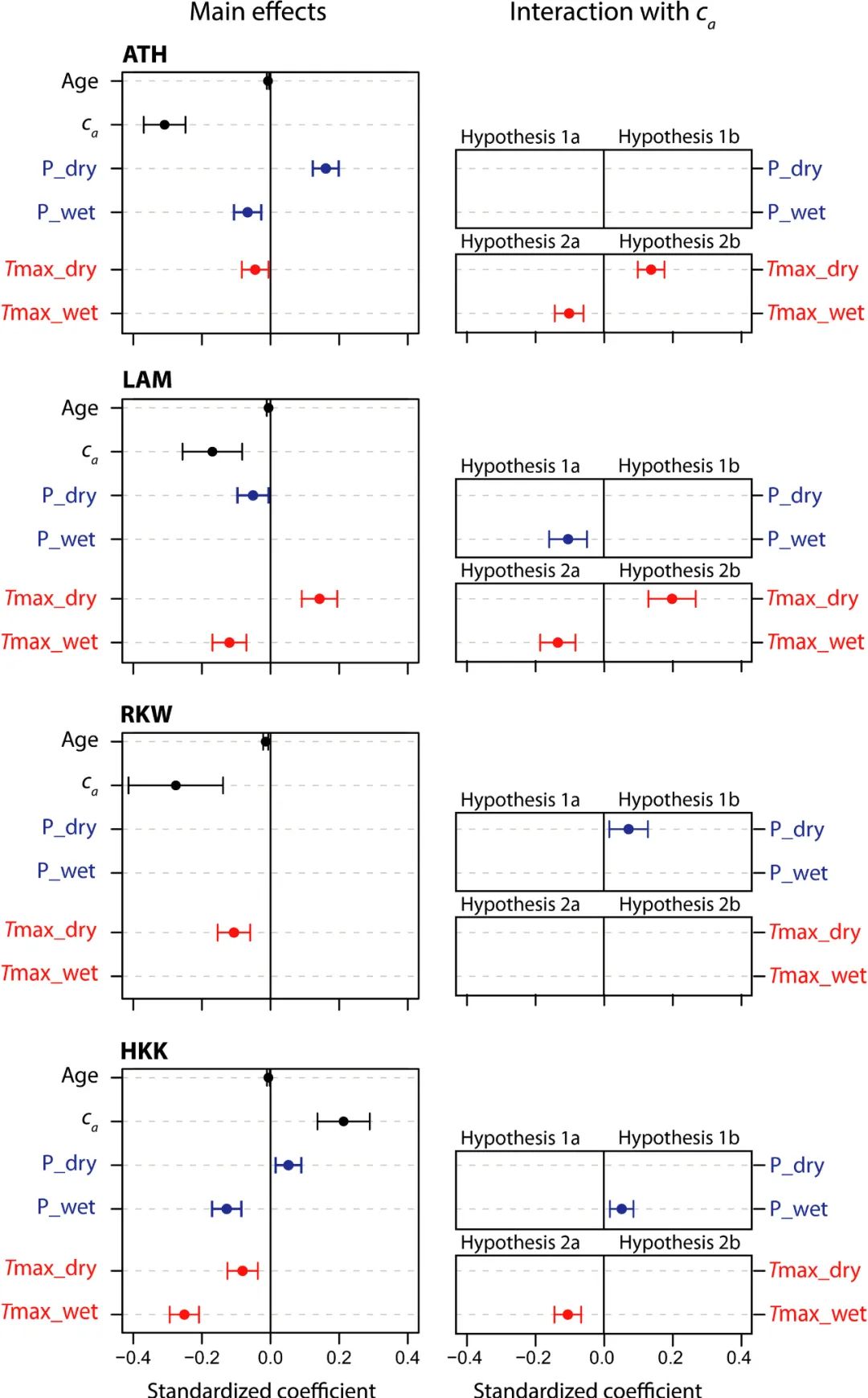
▉ 结论
总体而言,ca上升显著改变了红椿茎生长对气候变化的敏感性,但这些变化依赖于气候平均状态。我们的研究表明,ca上升对热带树木生长的影响可能比通常认为的更复杂,刺激性更小,需要在全球植被模型中进一步验证。


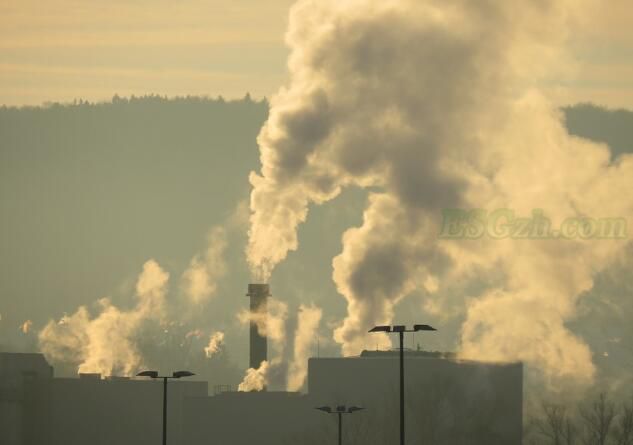
国务院办公厅关于印发新污染物治理行动方案的通知【国办发〔2022〕15号】





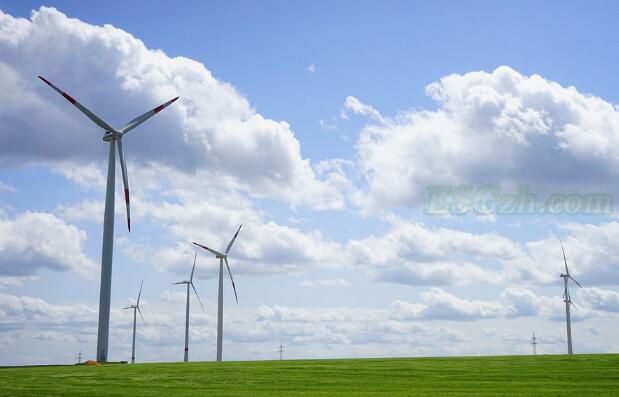



习近平在2020气候雄心峰会上的重要讲话 正式宣布碳排放与新能源装机新目标
